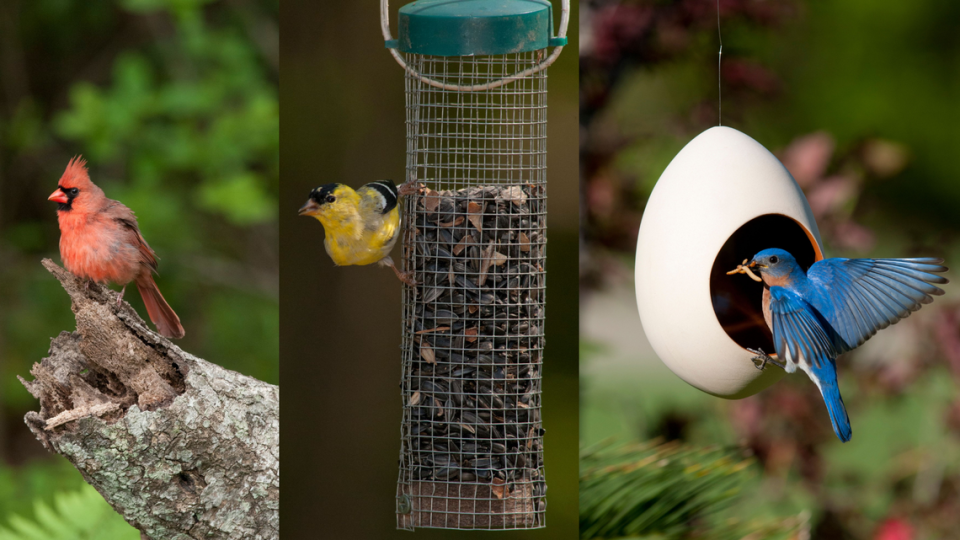Birds are scarce at feeders across South Mississippi, residents say. What’s going on?
Relax. Birds will be back at South Mississippi feeders soon.
Each year around this time, residents start worrying that they are seeing fewer birds than in years past. The Sun Herald has received multiple comments on its Sound Off line about the recent scarcity of birds.
“I’ve been feeding the birds for years and they have always been there to eat until this fall,” one commenter wrote to Sound Off. “Something unnatural is going on if you ask me.”
Two wildlife experts in South Mississippi say they’ve come to expect phone calls, questions and comments this time of year from residents worried about where the birds have gone.
“We’re seeing a long-term decline,” said Robert Smith, Coastal program coordinator for Wildlife Mississippi, “but the birds disappearing seasonally this time of year is a normal thing.”
Where did MS Coast birds go?
Birds are around. Residents just aren’t seeing them as much because the cardinals, wrens and other birds common in South Mississippi are finding plenty of berries, nuts and insects in natural environments.
Hummingbirds are an exception. The most common hummingbird on the Mississippi Coast, the ruby-throated hummingbird, has flown to South America for the winter. They are around from about March 15 to November 15 each year, said naturalist Mark LaSalle, who lives in Ocean Springs and owns LaSalle Consulting.
LaSalle recommends people leave out at least one nectar feeder for the winter because it might attract the rufous hummingbird common in western states. Some rufous hummingbirds migrate to east Georgia for the winter and fuel up on the Mississippi Coast during their journey.
They will stop at the same feeders each year, so residents who leave out a nectar feeder are likely to see the same birds on their annual journey, he said. One woman in Mobile, Alabama, reported a tagged rufous hummingbird stopping at her feeder for nine years straight, he said.

Birds native to Mississippi are still around, just not eating at feeders.
“Right now, there’s plenty of food out in the woods for them to eat,” LaSalle said. “When that temperature drops below 40, that’s when they’ll start coming back to those feeders.”
He said insects, a big part of a bird’s diet, are harder to find in cold weather. But temperatures on the Coast are still hitting the 60s and 70s even though meteorological winter arrived Wednesday. Astronomical winter starts Dec. 21.
Decline in bird populations documented
Many bird populations are declining overall because they have lost habitat, Robert Smith said. He cited conservation plans published by Partners in Flight, a network of 150 partner organizations in the Western Hemisphere working on landbird conservation.
Documents from Partners in Flight in 2016 reported “widespread declines in populations of many of the 448 species of landbirds in the U.S. and Canada—a foreboding indicator that the health of ecosystems upon which we all depend is being degraded,” the organization’s website said.
“Although we have made much progress over the past 20 years, the daunting task of conserving several hundred landbird species across vast and varied landscapes under diverse ownership requires unprecedented levels of cooperation among the public, private, and industrial sectors.”
The organization publishes online what it describes as “a growing list of species conservation profiles for the 86 species of greatest continental concern.” Profiles on common species in “steep decline” also are listed, along with resources to help protect and conserve bird populations.
Bird watchers should see busy feeders soon
Even with those declines, South Mississippi bird watchers should begin seeing at their seed feeders cardinals, tufted tit mouses, chickadees, Carolina wrens and gold finches, a common winter bird people love to watch, LaSalle said.
He also had a tip for residents who want to see less common birds at their feeders, including hermit thrushes pine warblers. and woodpeckers.
Residents can buy suet cakes to put out in wire mesh feeders or mix up their own food to attract different birds. The suet is basically fat that warms them up in winter. LaSalle recommends removing the suet cakes when the weather warms because they mold.
LaSalle said he has a recipe guaranteed to attract birds that generally don’t flock to seed feeders. Thoroughly mix three parts corn meal with one part each of flour, peanut butter and lard.
The mixture can be spread on a tree trunk or other suitable outdoor surface, or placed on a pine cone hung from a tree limb.
“Once they find it, they will not leave it alone,” LaSalle said. “They will eat it up.”

